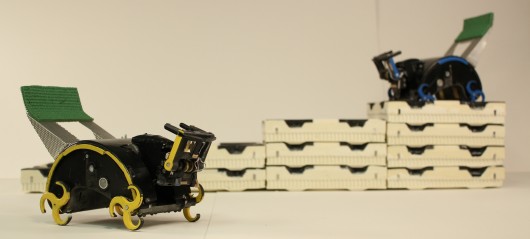Click here to view the embedded video.
Termite mounds offer a fascinating architectural quandary: how is it possible that these towering structures (which include complex systems of openings, passages, large volumetric spaces, and even active ventilation systems and humidity regulation) are constructed with no centralised control or planning? The spatial complexity that these thousands of insects can collectively achieve has inspired a Harvard team to create TERMES, a project focused on programming an artificial robotic swarm to build modular structures.

According to Radhika Nagpal, the Fred Kavli Professor of Computer Science at Harvard’s SEAS, ”the key inspiration we took from termites is the idea that you can do something really complicated as a group, without a supervisor, and, secondly, that you can do it without everybody discussing explicitly what’s going on, but just by modifying the environment.”
Click here to view the embedded video.
Combining ideas from ”swarm intelligence and programmable self-assembly,” TERMES employs a family of “decentralised algorithms” by which simple robots – without wireless communication or GPS or localisation – co-operate to build “user-specified structures out of modular blocks.” The new robotic platforms can build block structures much larger than the robots themselves, suggesting a fascinating potential for the “collective construction” of human habitats, particularly in disaster areas.

You can find out more about a pavilion showcased at London’s International Art Festival in 2009 inspired by the TERMES project here. For more about the potential of robotics for architecture, check out “Architecture by Robots, For Humanity.”
References: Harvard Gazette, BBC, SOSRG
TERMES: A Robotic Swarm That Collectively Constructs Modular Structures originally appeared on ArchDaily, the most visited architecture website on 25 Feb 2014.
send to Twitter | Share on Facebook | What do you think about this?